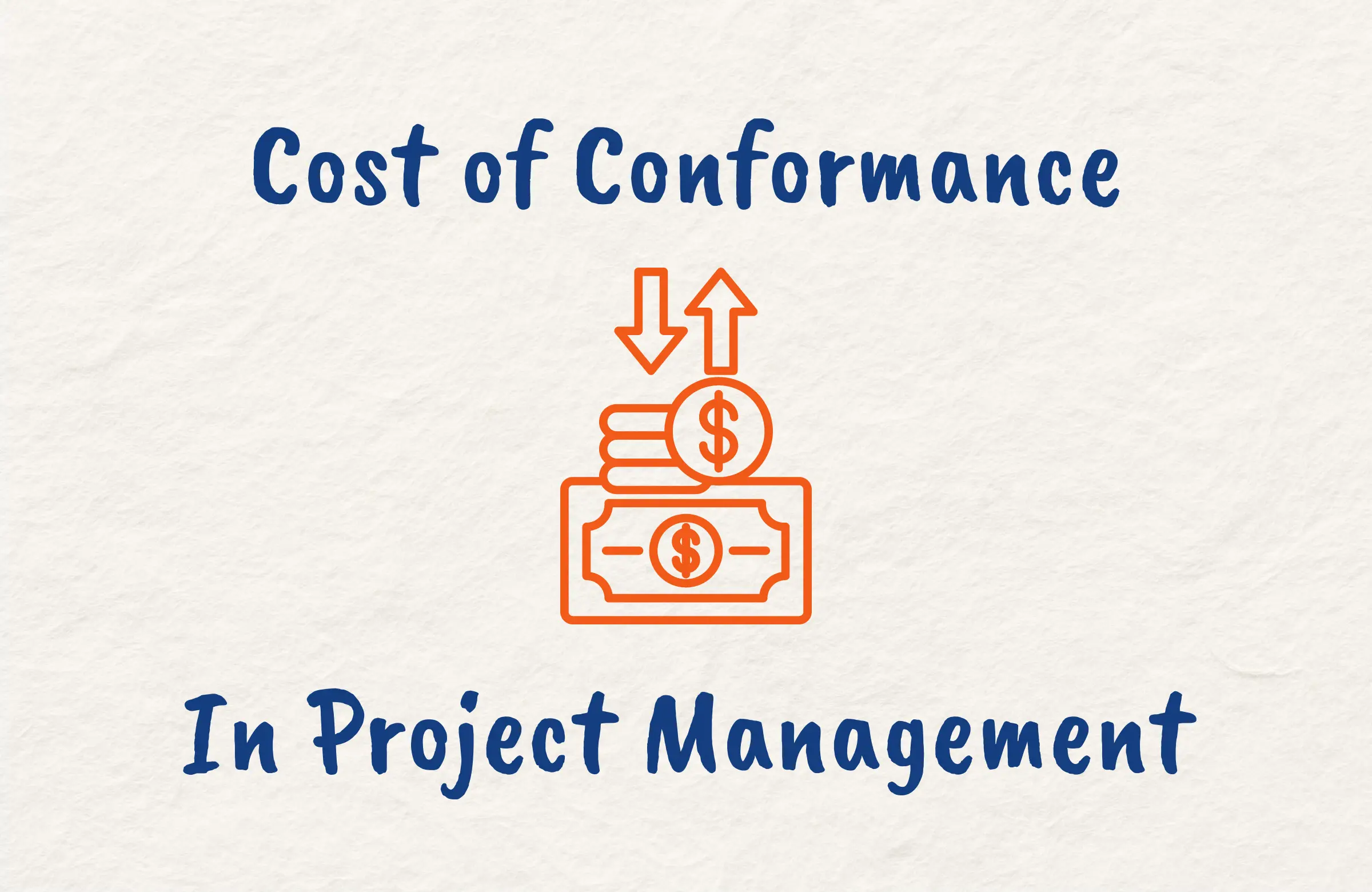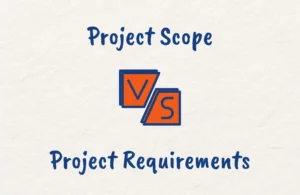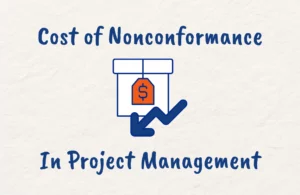Quality management is a key knowledge area in project management. To deliver high-quality projects, you must consider the cost of quality.
An important component of the cost of quality is the cost of conformance which is the cost incurred to ensure quality and it includes prevention and appraisal costs. Understanding conformance costs allows you to optimize quality processes.
In this post, we’ll discuss what the cost of conformance in project management entails, including the types, examples, and importance. You’ll learn how to balance conformance costs to achieve quality objectives efficiently.
We’ll also provide tips for PMP candidates to tackle exam questions on this topic as you can expect quite a few related to this concept.
What is Cost of Quality (COQ) in Project Management?
Cost of Quality (COQ) refers to the total costs associated with quality management in a project. As per the PMBOK guide, COQ includes the cost of planning and executing quality assurance activities to prevent defects, the cost of controlling quality by inspection/reviews, and the cost incurred due to internal and external failures.
Simply put, COQ is the sum of the cost of conformance (prevention + appraisal) and the cost of nonconformance (internal + external failure costs). As a project manager, you need to optimize these costs to deliver maximum value.
Conformance costs help build quality into the project upfront while nonconformance costs arise from poor quality due to wastage, rework, liability claims, etc. An optimal COQ strikes the right balance – spending adequately on prevention while minimizing failures.
Understanding this concept will help you make smart quality and cost decisions for your projects.
What is Cost of Conformance (COC) in Project Management?
Cost of conformance (COC) represents the cost incurred on prevention and appraisal activities to achieve quality objectives. When managing a project, you invest in COC to build excellence into processes and deliverables.
This includes expenses related to training, acquiring quality equipment, developing robust procedures, and conducting inspections and reviews. The goal is to develop quality systems that align with specifications so rework is minimized.
Effectively managing COC reduces nonconformance costs like defect repair. To optimize project spend, you must balance conformance costs to prevent overspending while attaining the desired quality levels.
Types of Conformance Costs
Conformance costs are incurred during project execution to achieve quality objectives. These proactive investments help avert defects and rework.
Conformance costs consist of two main categories:
1. Prevention Costs
Prevention costs relate to building quality into processes and deliverables. You may spend on:
- Training programs to enhance team skills
- Obtaining equipment and tools to improve productivity
- Creating robust documentation and standards
- Quality planning activities like process analysis
- Hiring consultants to advise on frameworks like Six Sigma
2. Appraisal Costs
Appraisal costs involve evaluating work products and project performance to identify quality issues. Your appraisal costs may include overheads for:
- Inspections, reviews, and walkthroughs
- Testing activities like user acceptance testing
- Audits for quality assurance
- Benchmarking studies to compare with best practices
- Surveys and interviews to gather user feedback
Optimizing prevention and appraisal costs will enable you to embed excellence into project outcomes in a cost-effective manner.
Importance of Cost of Conformance in Project Management
Cost of conformance is a vital concept in project quality management. Understanding its implications can help you deliver high-quality outcomes efficiently.
Here are some key benefits of leveraging conformance costs:
- Optimizes Quality Spend: Tracking conformance costs allows you to allocate quality budgets wisely as you can identify activities that give you the best ROI for defect prevention. This optimization reduces overall COQ.
- Builds Excellence into Processes: Investing in training, standards, and equipment facilitates excellence and robust processes with lower failure rates boost productivity.
- Enhances Customer Satisfaction: By proactively building quality into deliverables, you minimize defects that irritate customers which directly improves the customer experience.
- Lowers Rework: Higher conformance costs lead to fewer nonconformities thereby directly reducing rework and scrap, saving time and effort.
- Supports Continuous Improvement: Conformance costs provide data to identify areas for quality improvement in current and future projects.
Cost of Conformance Examples
To understand conformance costs better, let’s look at some examples across different project types:
Software Development Project Conformance Costs
As a software project manager, you may incur conformance costs for:
- Conducting code reviews and unit testing to meet quality standards
- Acquiring automated testing tools to accelerate quality checks
- Organizing training on secure coding best practices
- Developing detailed requirements documentation and standards
- Performing benchmarking studies to compare performance with top apps
- Holding inspections and peer reviews for completed features
Construction Project Conformance Costs
For a construction project, your conformance costs may involve:
- Training workers on safety and quality procedures
- Inspections of received materials to ensure specifications are met
- Lab testing of concrete, steel, etc. to validate strength and durability
- Surveying the site for precise measurement and layout
- Third-party quality audits to identify improvement areas
- Safety inspections and compliance reviews
- Checking equipment calibration and maintenance records
Event Management Project Conformance Costs
If you are organizing an event, conformance costs may include:
- Hiring experienced staff to deliver excellence
- Developing checklists and procedures for event execution
- Conducting onsite inspections to ensure readiness
- Undertaking dry runs to identify gaps in plans
- Arranging taste testing and quality checks for food
- Surveying attendees for satisfaction feedback
Cost of Conformance PMP Exam Tips
Understanding the cost of conformance is key to tackling questions on quality and cost management in the PMP exam.
As per the PMBOK guide 6th Edition, conformance cost is used in the Plan Quality Management and Control Quality processes. Questions may test your knowledge of:
- Types of conformance costs which are prevention and appraisal
- Examples like training, inspections, testing, etc.
- Impact on cost of quality and its optimization
- Difference between conformance and nonconformance costs
- How it helps build excellence into project deliverables
You may encounter situational questions that evaluate your ability to estimate or reduce conformance costs. Be prepared to analyze trade-offs between investing in prevention vs allowing more failures.
Also, brush up on numerical questions involving COQ calculations. Tracking actual conformance costs aids in more accurate cost estimates for future projects.
Final Thoughts on Cost of Conformance
As detailed in this article, the cost of conformance is the investment made to build excellence into project processes and deliverables. Tracking conformance costs allows you to optimize quality spend and reduce overall COQ.
Applying concepts like prevention and appraisal costs will help you make smart decisions to balance cost and quality tradeoffs. Use this knowledge to deliver high-value outcomes for your projects without exceeding budgets.
Also, with a strong grasp of this key aspect of project quality management, you can confidently tackle PMP exam questions on this topic.





